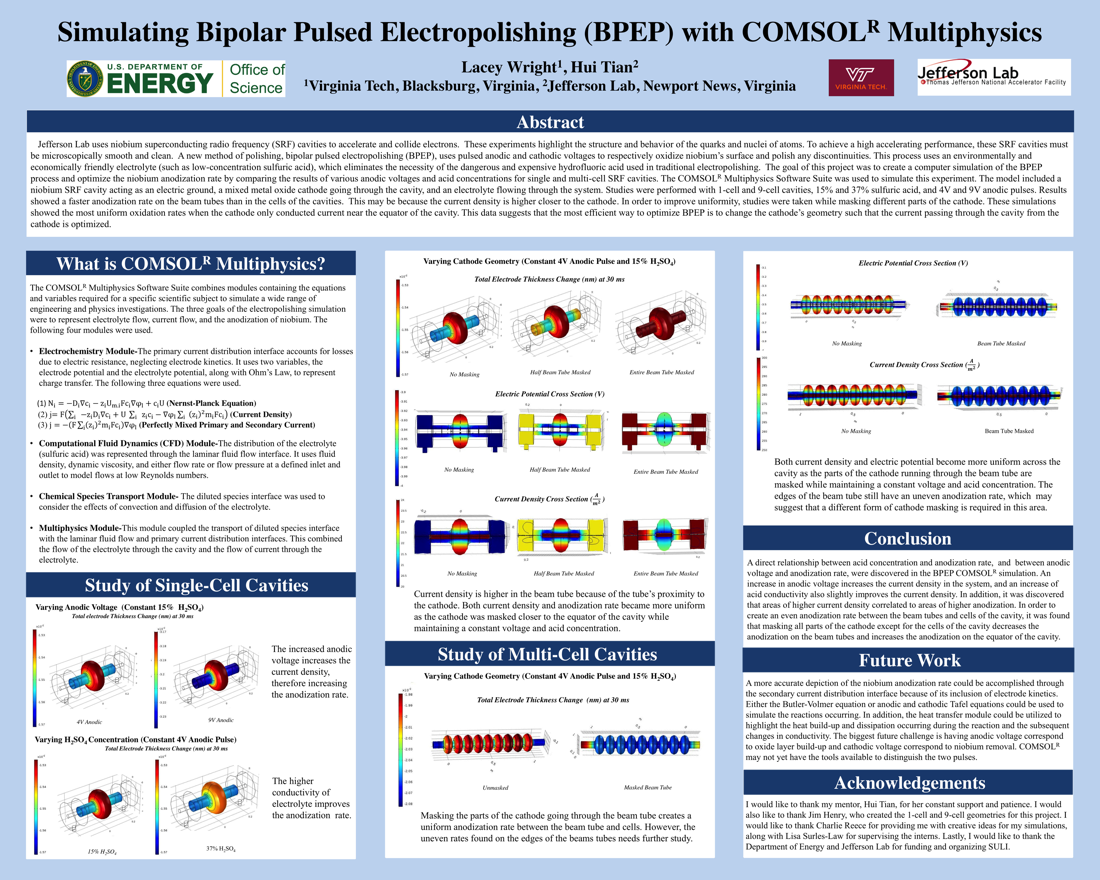Undergraduate Research at Jefferson Lab
Simulating Bipolar Pulsed Electropolishing with COMSOLR Multiphysics
Student: Lacey Wright
School: Virginia Tech University
Mentored By: Hui Tian
Jefferson Lab uses niobium superconducting radio frequency (SRF) cavities to accelerate and collide electrons. These experiments highlight the structure and behavior of the quarks and nuclei of atoms. To achieve a high accelerating performance, these SRF cavities must be microscopically smooth and clean. A new method of polishing, bipolar pulsed electropolishing (BPEP), uses pulsed anodic and cathodic voltages to respectively oxidize niobium's surface and polish any discontinuities. This process uses an environmentally and economically friendly electrolyte (such as low-concentration sulfuric acid), which eliminates the necessity of the dangerous and expensive hydrofluoric acid used in traditional electropolishing. The goal of this project was to create a computer simulation of the BPEP process and optimize the niobium anodization rate by comparing the results of various anodic voltages and acid concentrations for single and multi-cell SRF cavities. The COMSOLR Multiphysics Software Suite was used to simulate this experiment. The model incuded a niobium SRF cavity acting as an electric ground, a mixed metal oxide cathode going through the cavity, and an electrolyte flowing through the system. Studies were performed with 1-cell and 9-cell cavities, 15% and 37% sulfuric acid, and 4V and 9V anodic pulses. Simulation results showed a faster anodization rate on the beam tubes than in the cells of the cavities. This may be because the current density is higher closer to the cathode. In order to improve uniformity, studies were taken while masking parts of the cathode. These simulations showed the most uniform anodization rates when the cathode only conducted current near the equator of the cavity. This data suggests that the most efficient way to optimize BPEP is to change the cathode's geometry such that the current passing through the cavity from the cathode is optimized.

Citation and linking information
For questions about this page, please contact Education Web Administrator.
